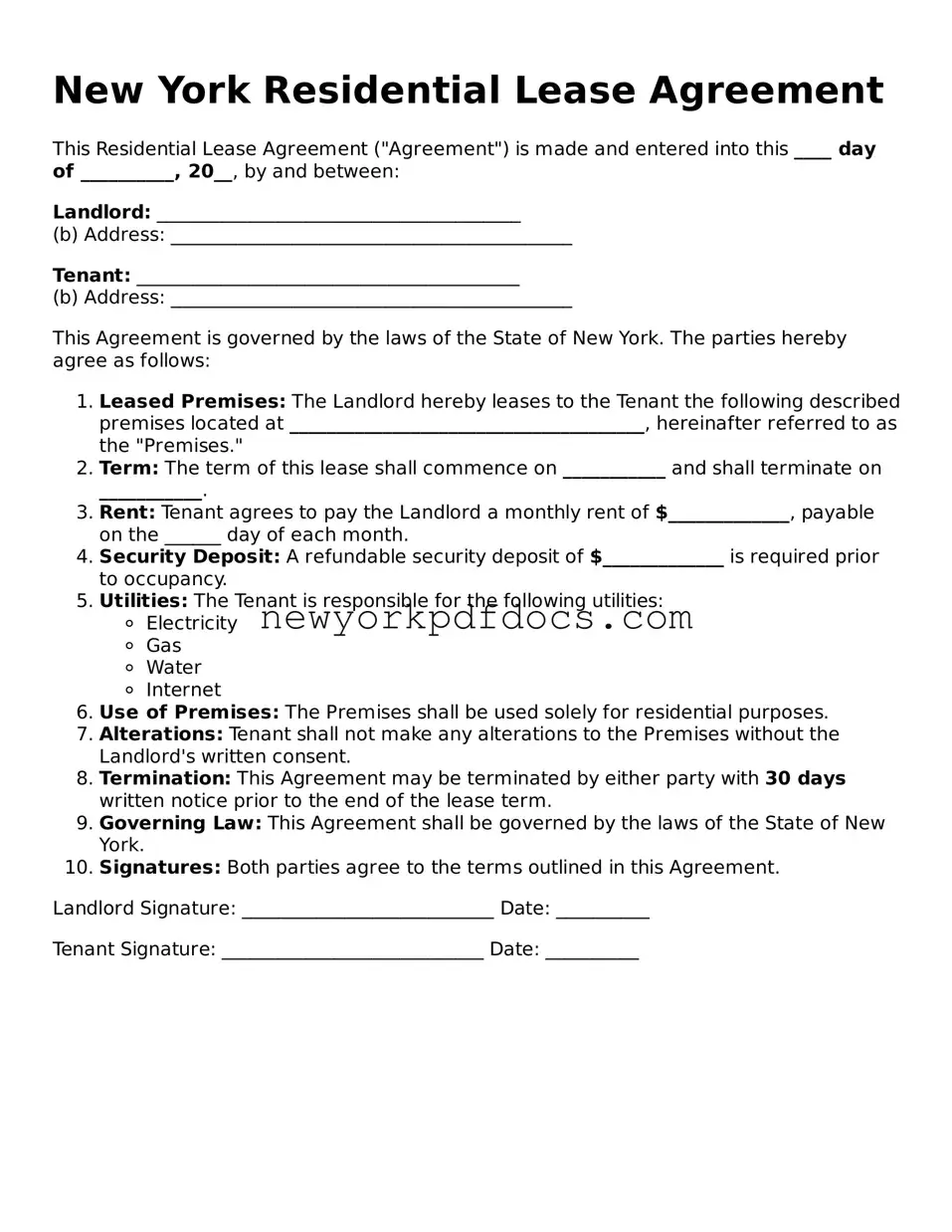New York Residential Lease Agreement
This Residential Lease Agreement ("Agreement") is made and entered into this ____ day of __________, 20__, by and between:
Landlord: _______________________________________
(b) Address: ___________________________________________
Tenant: _________________________________________
(b) Address: ___________________________________________
This Agreement is governed by the laws of the State of New York. The parties hereby agree as follows:
- Leased Premises: The Landlord hereby leases to the Tenant the following described premises located at ______________________________________, hereinafter referred to as the "Premises."
- Term: The term of this lease shall commence on ___________ and shall terminate on ___________.
- Rent: Tenant agrees to pay the Landlord a monthly rent of $_____________, payable on the ______ day of each month.
- Security Deposit: A refundable security deposit of $_____________ is required prior to occupancy.
- Utilities: The Tenant is responsible for the following utilities:
- Electricity
- Gas
- Water
- Internet
- Use of Premises: The Premises shall be used solely for residential purposes.
- Alterations: Tenant shall not make any alterations to the Premises without the Landlord's written consent.
- Termination: This Agreement may be terminated by either party with 30 days written notice prior to the end of the lease term.
- Governing Law: This Agreement shall be governed by the laws of the State of New York.
- Signatures: Both parties agree to the terms outlined in this Agreement.
Landlord Signature: ___________________________ Date: __________
Tenant Signature: ____________________________ Date: __________
